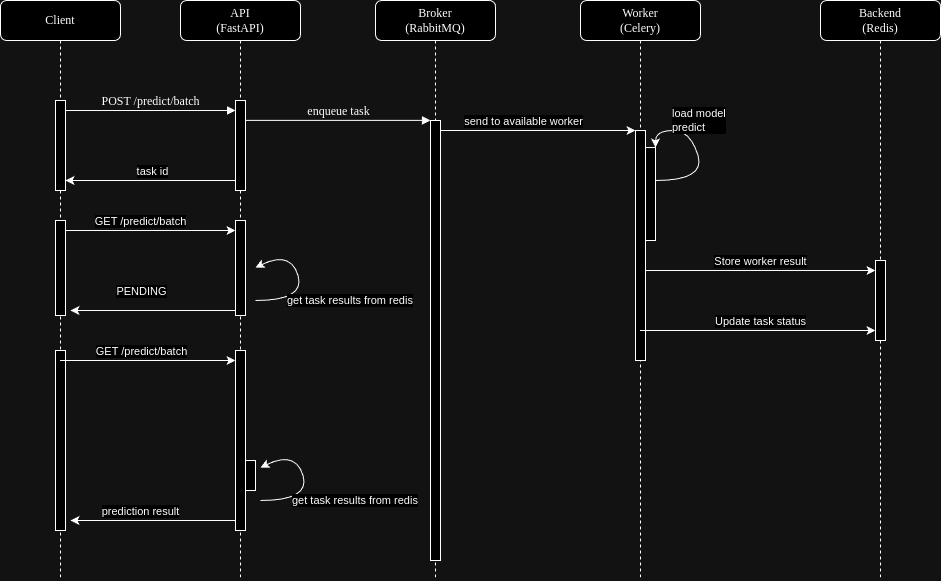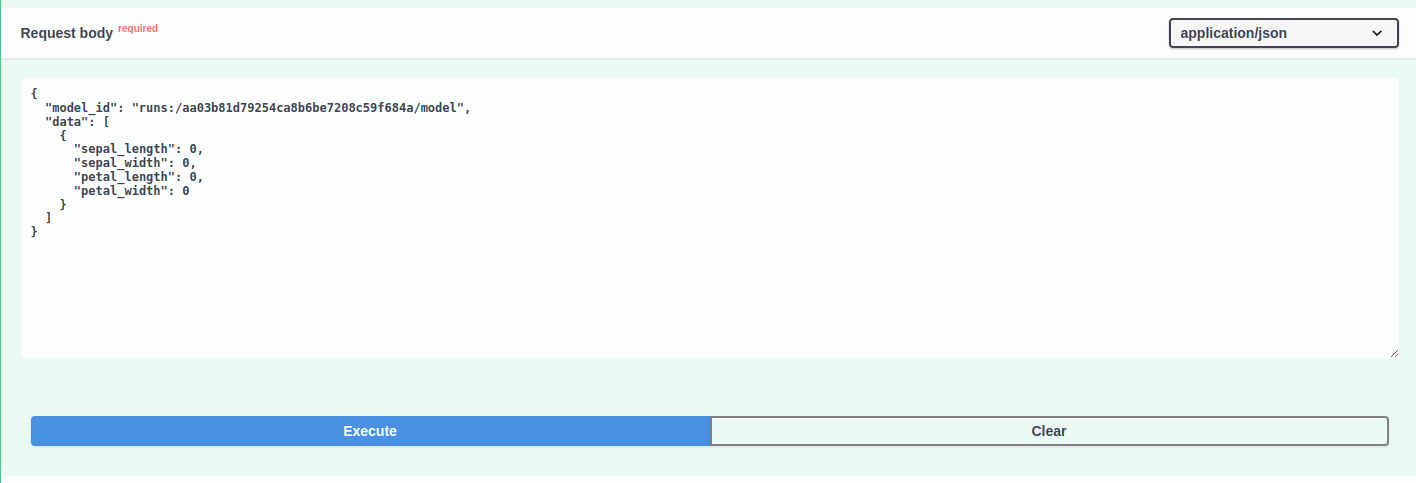This project aims to create a ML system that can predict the species of an iris flower based on the length and width of its petals and sepals. To do this, this project provides a REST API that can be used to predict the species synchronously and also using asynchronous tasks. Another great feature is the possibility to train the model using the API and monitoring the training process using MLFlow, in addition to the possibility to version the model and use it by the API.
To run this application, you need to clone the repository by:
git clone https://github.com/jpfcabral/iris.git && cd iris
Sometimes you need to set permissions to copy .sh files into the container
chmod +x ./build/wait-for-it.sh
After that, you can run using docker-compose:
docker compose up --build
To test this application, you need to clone the repository by:
git clone https://github.com/jpfcabral/iris.git && cd iris
Then, you need to install the dependencies:
pip install -U pipenv && pipenv install
After that, you can run the tests using the following command:
pipenv run unittests
You should see the following output:
---------- coverage: platform linux, python 3.11.3-final-0 -----------
Name Stmts Miss Cover Missing
----------------------------------------------------
app/__init__.py 0 0 100%
app/config.py 7 0 100%
app/iris/__init__.py 0 0 100%
app/iris/models.py 19 0 100%
app/iris/services.py 21 1 95% 20
app/iris/tasks.py 68 9 87% 56, 89-97
app/iris/views.py 38 1 97% 68
app/main.py 7 0 100%
----------------------------------------------------
TOTAL 160 11 93%
NOTE: The training tests/code should be upgrated to make sure about the real behavior of the model.
After cloning the repository and running the appliation, you can access the API documentation by:
http://localhost:8000/docs
Then you'll able to see the documentation and the following endpoints:
To predict the species of an iris flower, you can use the /predict and /predict/batch endpoints. You need to pass the following parameters:
- sepal_length: float
- sepal_width: float
- petal_length: float
- petal_width: float
The /predict endpoint will return the prediction synchronously, while the /predict/batch will return the prediction asynchronously. Therefore, you need to pass the task_id returned by the /predict/batch endpoint to the /predict/batch/{task_id} endpoint to get the prediction result, meanwhile the /predict will return the predictions in one request.
The sequence diagram below shows how the async prediction works:
To train the model, you can use the /training endpoint. At the request body, you only need to pass the csv file with the training data. The training process will be monitored by MLFlow and you can access the MLFlow UI by:
http://localhost:5000
Then you'll able to see the training process and the metrics:
After the training process, you can use the trained model to predict the species of an iris flower passing the model id to the /predict/batch endpoint.
- Organize the training code in a better way
- Set model archtecture as paramters in training request
- Add data versioning



